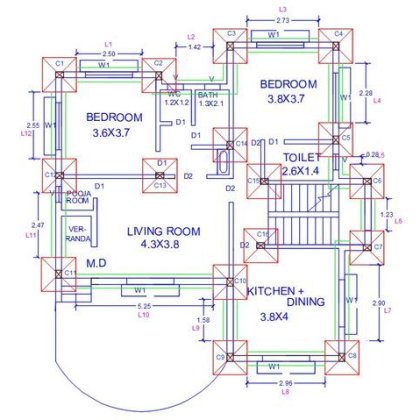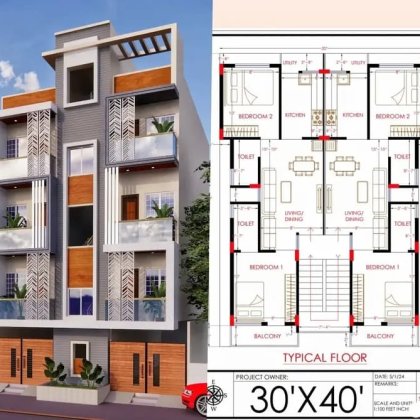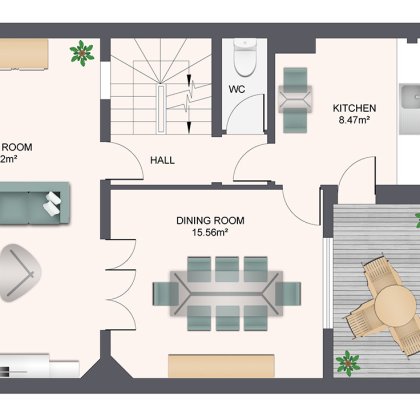वास्तु शास्त्र में दिशाओं का क्या महत्व है?

वास्तु शास्त्र में दिशाओं का क्या महत्व है?
Outline of the Article: The Importance of Directions in Vastu Shastra**
H1: Introduction to Vastu Shastra
– What is Vastu Shastra?
– Historical Background of Vastu Shastra
– Why is Vastu Shastra Relevant Today?
H2: The Significance of Directions in Vastu Shastra
– The Concept of Directions in Vastu
– How Directions Influence Energy Flow
– The Eight Main Directions in Vastu Shastra
H3: Understanding Each Direction and Its Importance
– North (Uttar) – The Direction of Wealth
– East (Purva) – The Direction of Health and Growth
– South (Dakshin) – The Direction of Strength and Confidence
– West (Paschim) – The Direction of Stability
H3: Sub-Directions in Vastu Shastra
– Northeast (Ishan) – The Direction of Spirituality
– Southeast (Agneya) – The Direction of Fire and Energy
– Southwest (Nairitya) – The Direction of Relationships and Skills
– Northwest (Vayavya) – The Direction of Opportunities
H2: How to Use Directions for a Vastu-Compliant Home
– Best Practices for Home Layout According to Directions
– Vastu Tips for the Main Entrance
– Placement of Rooms Based on Directions
H2: Directions and Elements in Vastu Shastra
– The Five Elements and Their Corresponding Directions
– Balancing the Elements in Your Living Space
H2: Common Vastu Dos and Don’ts Based on Directions
– What to Avoid in Certain Directions
– Remedies for Vastu Defects According to Directions
H3: Using Vastu to Enhance Positive Energy
– Direction-Based Tips for Attracting Prosperity
– Health and Well-Being Improvements Through Vastu
– Enhancing Relationships with Directional Adjustments
H2: The Impact of Directions on Business and Workspaces
– Importance of Directions in Office Settings
– Tips for Vastu-Compliant Workspaces
H2: The Role of Colors in Directional Vastu
– Ideal Colors for Each Direction
– How Colors Influence Mood and Energy Flow
H2: Frequently Asked Questions About Directions in Vastu Shastra
– What Happens if a House Faces an Inauspicious Direction?
– Can Vastu Defects Be Corrected Without Reconstruction?
– Is Vastu Shastra Scientifically Proven?
H1: Conclusion
– Summing Up the Importance of Directions in Vastu Shastra
– How to Start Applying Vastu Principles
H2: FAQs
– Why is the Northeast direction considered the most auspicious?
– What are some simple Vastu remedies for a home facing the wrong direction?
– Can Vastu principles be applied to apartments?
– How does Vastu impact mental well-being?
– Is it necessary to follow Vastu if living in a rented house?
The Importance of Directions in Vastu Shastra
Introduction to Vastu Shastra
Vastu Shastra is an ancient Indian science that revolves around architecture and design. It combines art, science, and astrology to create harmonious living spaces that align with the natural forces. This traditional knowledge has been passed down through centuries, providing guidelines for designing homes, temples, offices, and other structures in a way that promotes positive energy and well-being.
Dating back to the Vedic era, Vastu Shastra has continued to play a significant role in Indian culture. While it may seem ancient, its principles remain relevant in modern times, offering insights on how to build spaces that attract prosperity, health, and peace.
The Significance of Directions in Vastu Shastra
In Vastu Shastra, directions are more than mere geographical orientations—they are gateways to specific energies. The correct utilization of directions can enhance positivity, while the wrong orientation might lead to disturbances and misfortune.
Each direction in Vastu Shastra is believed to influence various aspects of life, from wealth and health to relationships and spiritual growth. Understanding how these directions work is crucial for creating a balanced environment.
Understanding Each Direction and Its Importance
North (Uttar) – The Direction of Wealth
The North is associated with the god of wealth, Kubera. It’s considered a direction that attracts prosperity and financial stability. Placing valuable items or a safe in the North is believed to increase wealth.
East (Purva) – The Direction of Health and Growth
The East is ruled by the Sun, the source of all energy. This direction signifies new beginnings, health, and vitality. It is often recommended to have windows or open spaces in the East to allow the morning sunlight to enter, filling the home with positive energy.
South (Dakshin) – The Direction of Strength and Confidence
Contrary to popular belief, the South isn’t an unlucky direction. It is related to Mars, symbolizing strength, courage, and stability. A well-designed South-facing structure can boost self-confidence and create a secure environment.
West (Paschim) – The Direction of Stability
The West, governed by Saturn, represents stability and patience. This direction is beneficial for those who seek long-term success and enduring relationships. Bedrooms or study rooms in the West promote steady growth.
Sub-Directions in Vastu Shastra
Northeast (Ishan) – The Direction of Spirituality
The Northeast is considered the most auspicious direction, as it combines the energies of North and East. This direction is linked to spirituality, peace, and wisdom. It is ideal for meditation rooms or a small temple.
Southeast (Agneya) – The Direction of Fire and Energy
The Southeast is ruled by the element of fire, making it the best direction for kitchens. A well-placed kitchen in this direction can boost health and energy levels within the home.
Southwest (Nairitya) – The Direction of Relationships and Skills
The Southwest is linked to personal skills, relationships, and family bonding. Bedrooms in this direction can strengthen relationships, while offices placed here might enhance decision-making abilities.
Northwest (Vayavya) – The Direction of Opportunities
Northwest is associated with air and movement. This direction governs opportunities, travel, and communication. It is suitable for guest rooms or living areas to encourage interaction and social connections.
How to Use Directions for a Vastu-Compliant Home
Creating a Vastu-compliant home involves understanding how to place each room according to directional energies. For instance, the entrance should ideally face East or North to allow the inflow of positive energies. Bedrooms are best in the Southwest, while the kitchen should be in the Southeast.
Directions and Elements in Vastu Shastra
The five elements—Earth, Water, Fire, Air, and Space—are closely tied to the eight main directions. For example, the Southeast is linked to fire, while the Northeast is related to water. Balancing these elements in their respective directions ensures a harmonious living space.
Common Vastu Dos and Don’ts Based on Directions
– Do: Keep the North clean and clutter-free to attract wealth.
– Don’t: Place heavy furniture in the Northeast as it can block spiritual energy.
– Do:Keep mirrors away from the South and Southwest to avoid energy conflicts.
– Don’t: Sleep with your head pointing North; it is believed to disrupt peace.
Using Vastu to Enhance Positive Energy
Proper orientation and placement in line with Vastu principles can attract prosperity, better health, and improved relationships. Even minor adjustments, like changing the direction of a bed or rearranging furniture, can lead to significant positive shifts in energy.
The Impact of Directions on Business and Workspaces
In professional spaces, directions can impact productivity and business success. For instance, the office entrance should ideally face North or East for a prosperous environment. Desks should be positioned to face the Northeast to inspire clear thinking and growth.
The Role of Colors in Directional Vastu
Colors can greatly influence the energy of a space. In Vastu Shastra, specific colors are recommended for different directions:
– North: Green and light shades for prosperity.
– East: Light yellow for positivity.
– South: Red or orange for strength.
– West: Blue for stability.
Conclusion
Directions in Vastu Shastra are a guide to creating balanced, positive, and energy-efficient living and working environments. By following Vastu principles, you can transform your home or workspace into a haven of well-being and prosperity. Begin with small changes, and over time, you’ll notice a significant difference in the flow of energy.
FAQs
1. Why is the Northeast direction considered the most auspicious?
The Northeast combines the beneficial energies of the North and East, making it ideal for spiritual growth and positivity.
2. What are some simple Vastu remedies for a home facing the wrong direction?
You can use mirrors, crystals, and strategic placements of objects to correct Vastu defects without major changes.
3. Can Vastu principles be applied to apartments?
Yes, Vastu principles can be adapted to suit apartments, focusing on the entrance and room orientations.
4. How
Does Vastu impact mental well-being?
Proper Vastu arrangements can create a peaceful environment, reducing stress and promoting mental clarity.
5. Is it necessary to follow Vastu if living in a rented house?
While not mandatory, small adjustments according to Vastu can still enhance the energy of rented spaces.

























